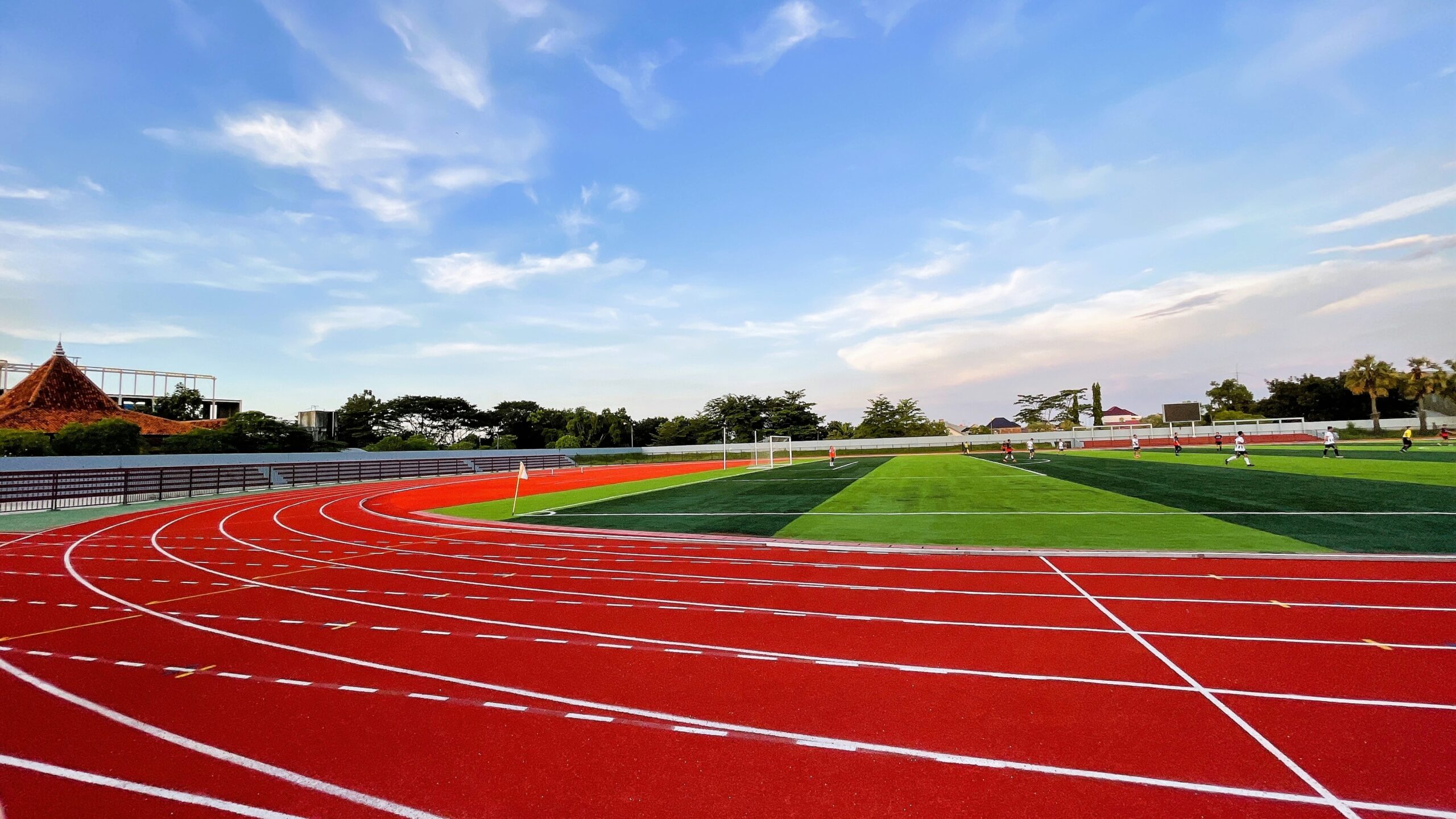What Is a Running Track Surface Made Of?
Read More

From dirt and cinder tracks of the past to the modern synthetic systems of today, running track surfaces and their impact on player performance have come a long way. When evaluating how track surfaces affect running times, comparing key factors such as material properties, traction performance, and surface consistency will help you narrow down the best options for your athletic performance and aesthetic goals.
In this helpful overview, we explore the most popular track surface types and how their various properties influence running performance, athletic safety, and all-around track utility.
Asphalt has long been utilized because it is affordable, strong, drains quickly, and functions well due to its moderate traction performance. It is also a versatile and easy-to-install track surface, making it ideal for multi-use facilities that would like to host additional sports and activities on the same surface.
Despite asphalt’s durable and affordable advantages, its hardness can contribute to reduced player comfort and impact injuries. Another consideration is its high heat absorption and retention, which can make asphalt an undesirably hot option in areas with plenty of sunshine and above-average temperatures. Asphalt running tracks are also prone to cracking and require more frequent maintenance to maintain a safe and aesthetically pleasing surface finish.
The best rubber running track surfaces are engineered to blend optimal traction with beneficial cushioning properties for a superior running experience. Modern synthetic materials are also highly resistant to wear-and-tear and fluctuating weather conditions; top-rated rubber track surfaces are able to withstand sunshine, rain, snow, excessive foot traffic, and more for a dependable surface finish that provides year-round performance consistency.
The benefits of rubber running tracks also extend into all realms of maintenance and repair. First, rubber is very easy to clean and maintain; the resilient synthetic composition resists dirt and mildew while simultaneously washing quickly when routine cleaning tasks are required. And, unlike asphalt or concrete surfaces, which require more complicated repair and construction processes, rubber can be quickly patched or resurfaced with minimal downtime.
As far as consistency, rubber tracks are one of the most reliable surfaces in existence. They resist deformation, dry quickly, and remain cooler than many other surface types. They can also be coated with superior finishes that further complement their weather-resistant and traction-improving properties.
Despite these numerous upsides, installing a high-quality synthetic running track or rubber gym flooring generally costs more than other lower-quality surface types. Alongside the initial surface installation, other features such as installing appropriate drainage and managing synthetic material disposal are other considerations that can contribute to higher initial/replacement costs.
Although less common than rubber and asphalt tracks, a shock-absorbing turf can be used as a running track! Although most facilities utilize turf for the central field and their warm-up areas, any turf installation can be striped for running purposes. Turf tracks offer great drainage, low maintenance, and are available in a range of styles for enhanced player safety, predictable traction, and overall running comfort.
Another reason many facilities utilize turf for their running track is for multi-purpose athletic needs. Since turf functions perfectly for soccer, football, lacrosse, field hockey, and so many other sports, combining the main field with a turf running track may be necessary if square footage or budget constraints call for an all-in-one installation.
In addition to these key benefits, turf fields, and tracks are the most customizable options available. Artificial turf comes in a spectrum of colors, styles, and shock-absorbing compositions, making turf a top option if you have a specific theme in mind or want to prioritize player safety over the competitive properties of a harder surface type.
If you would like to learn more about the best running track surfaces, contact our experts at Keystone Sports Construction today.